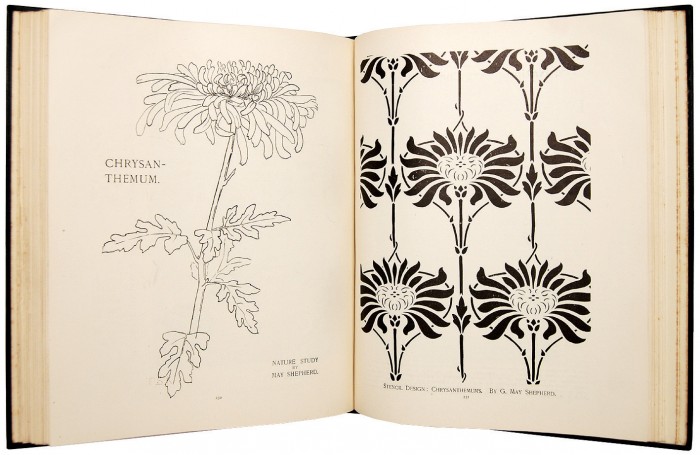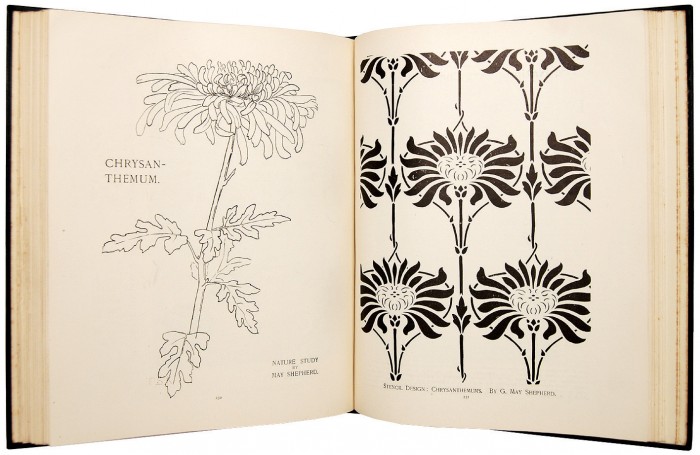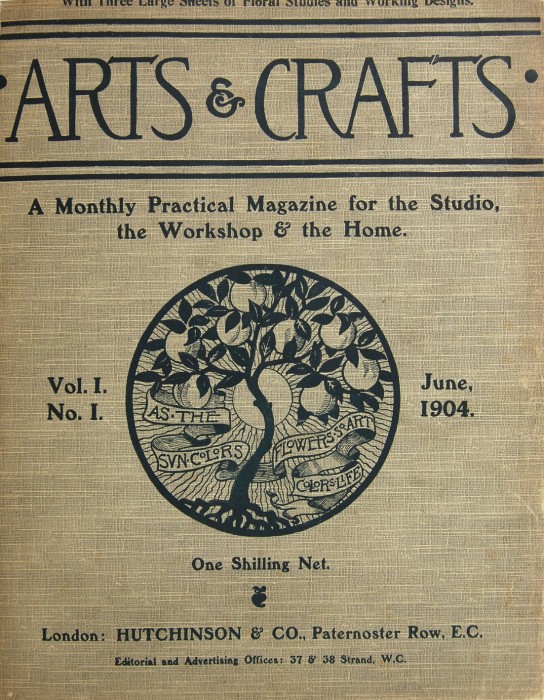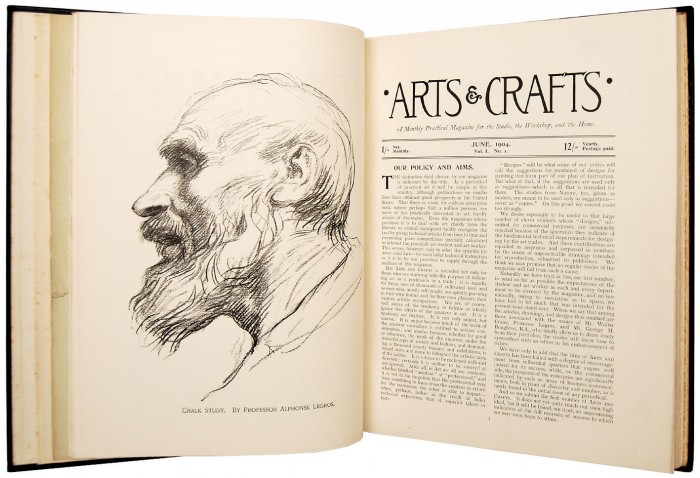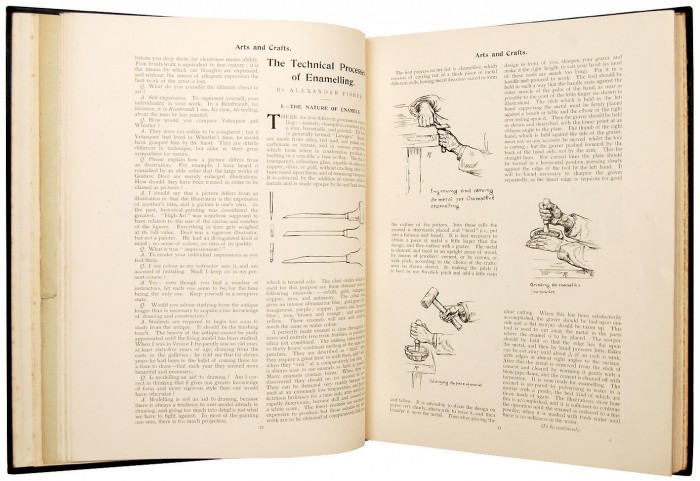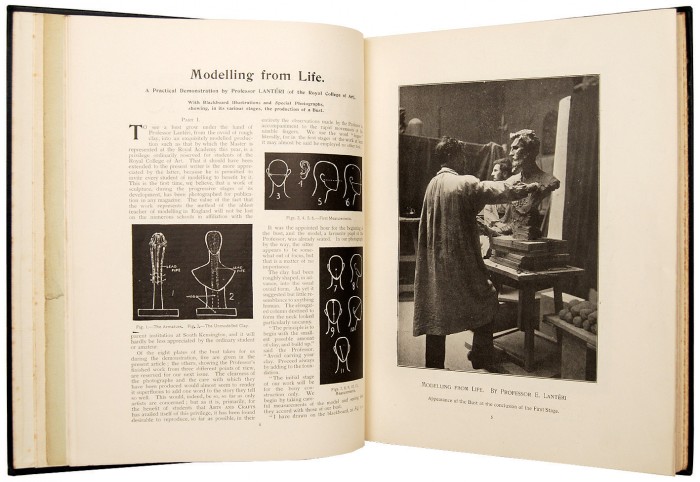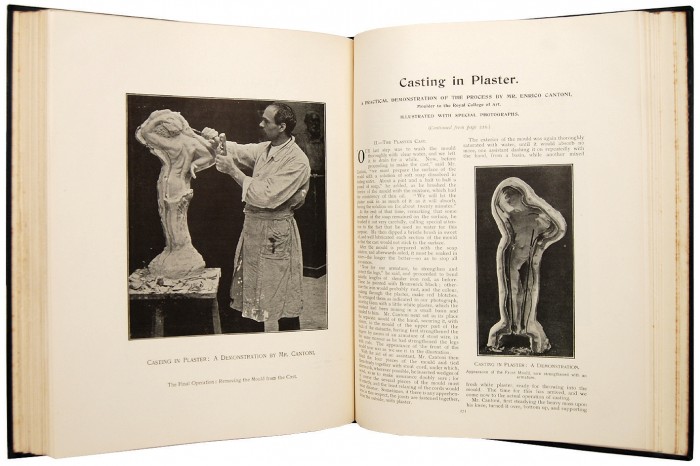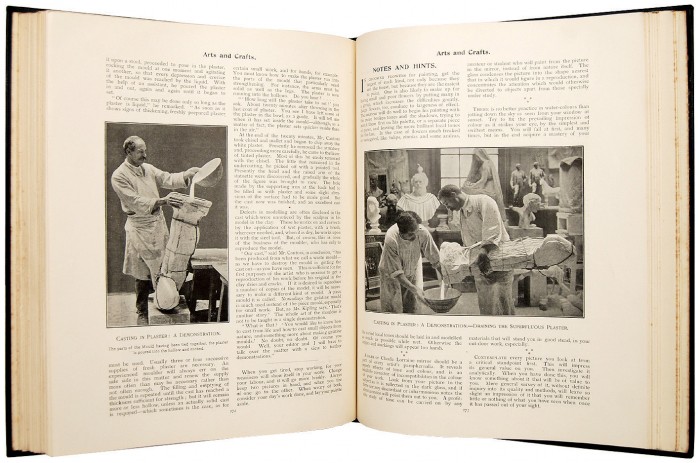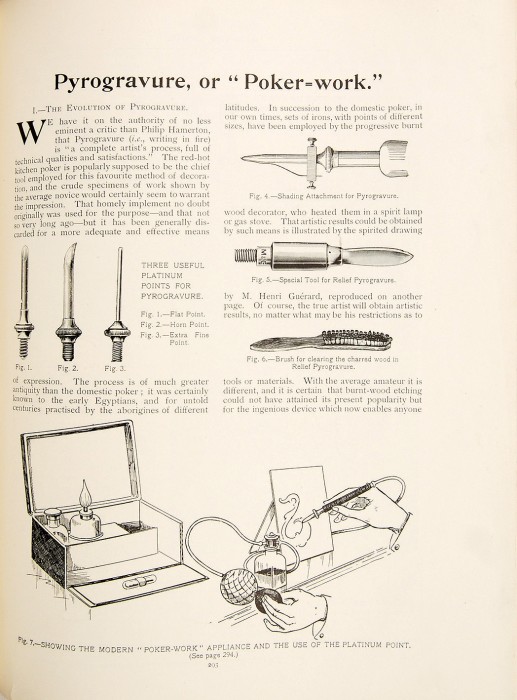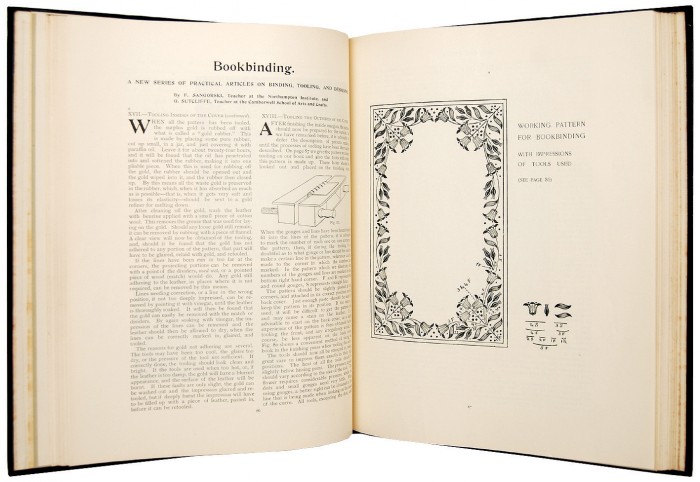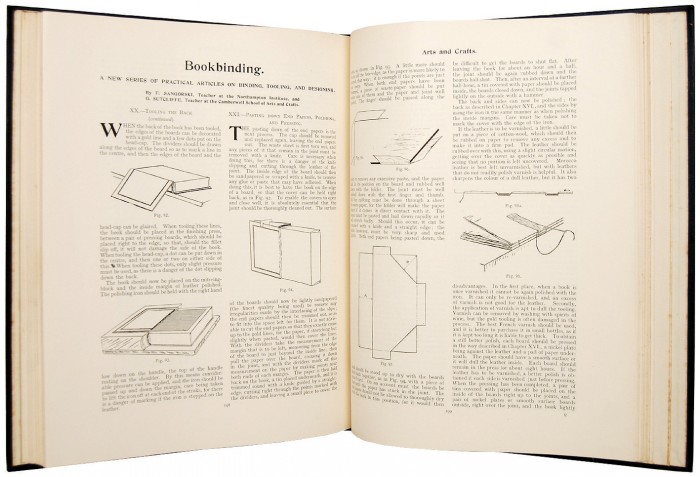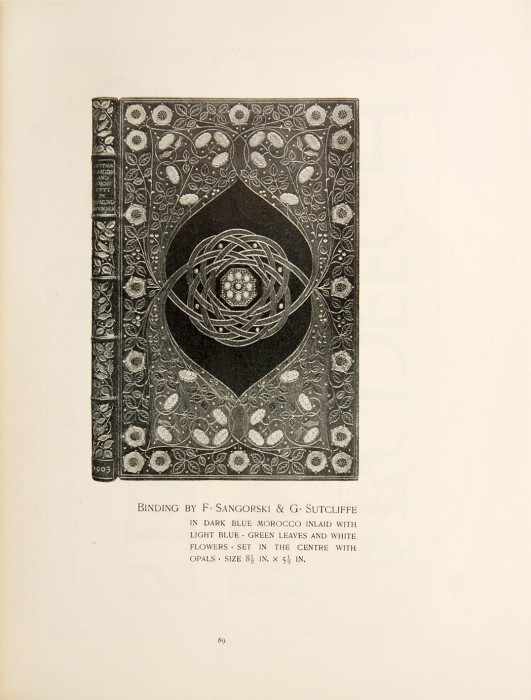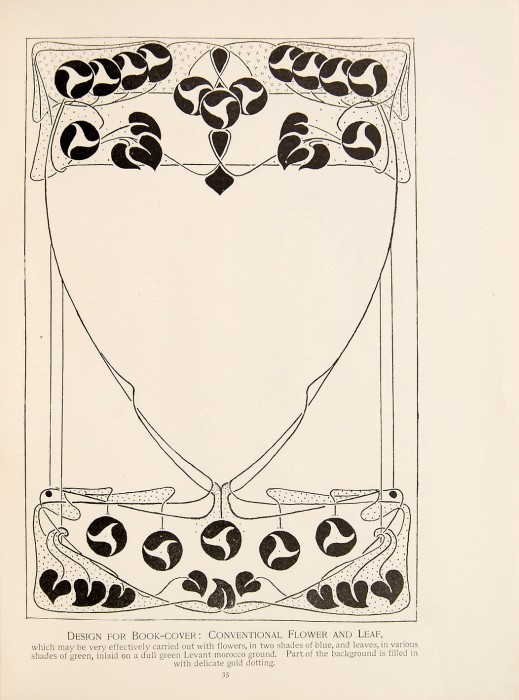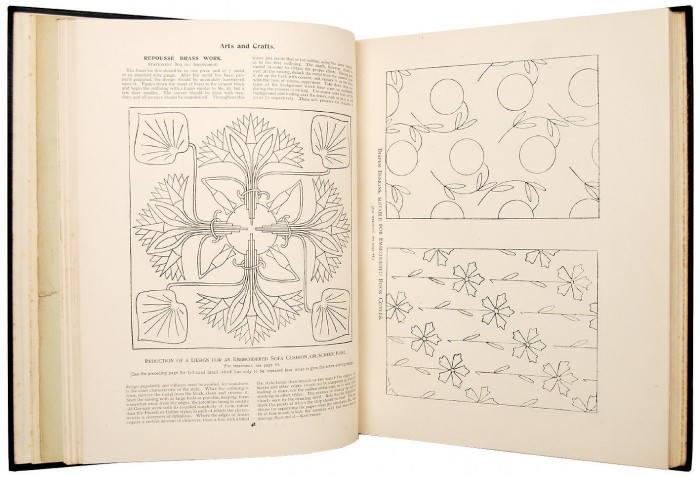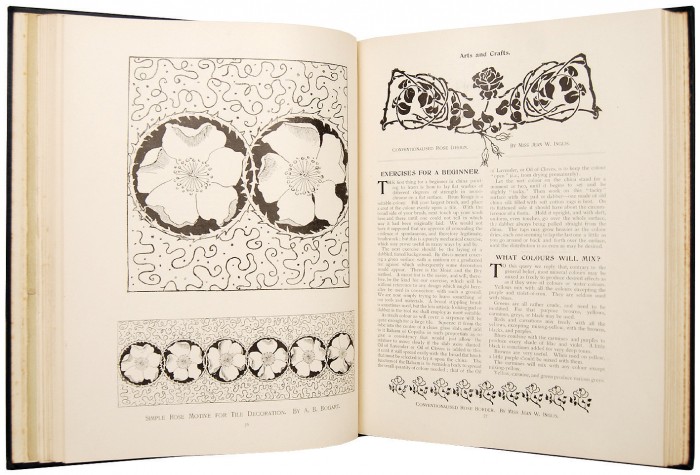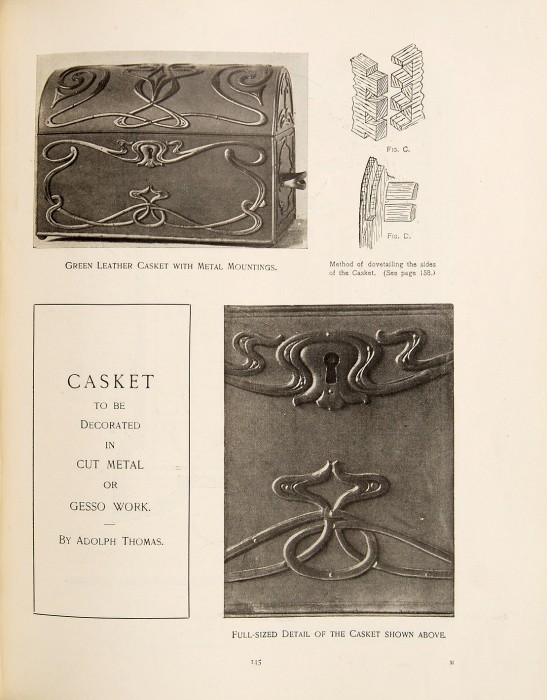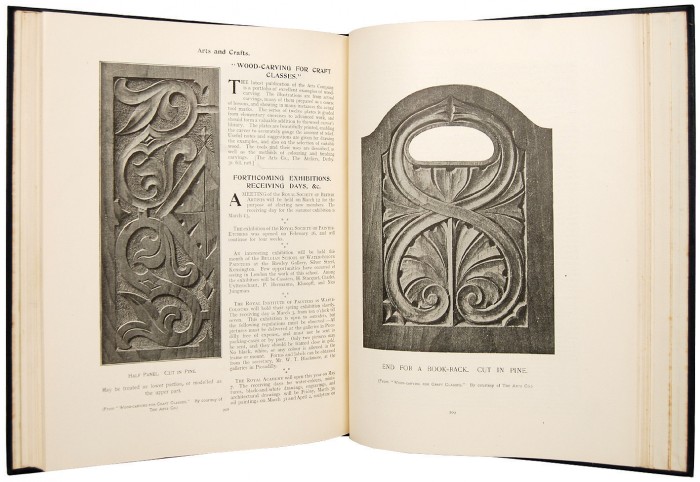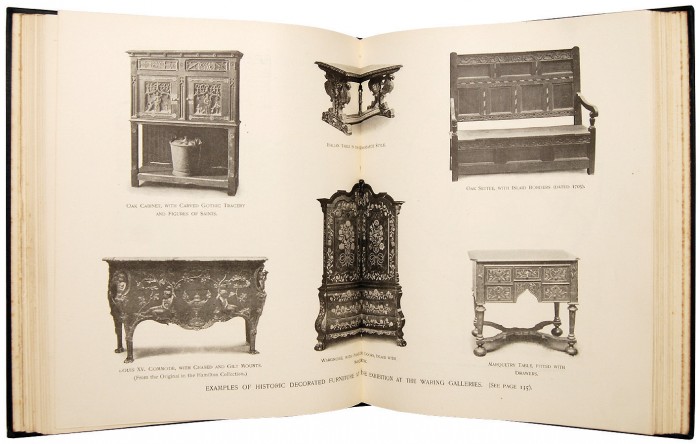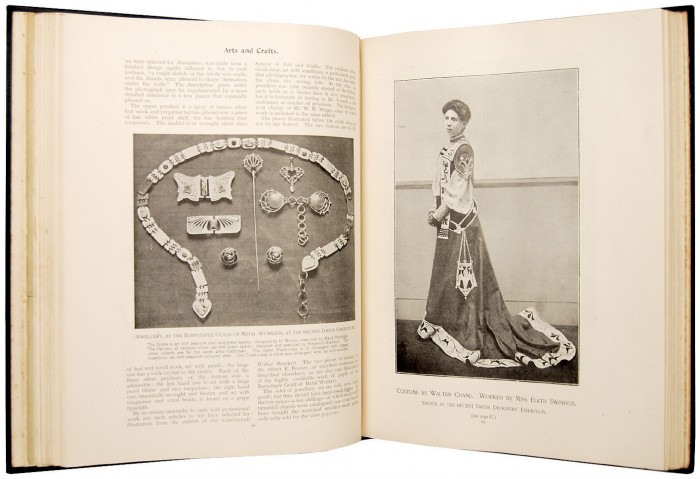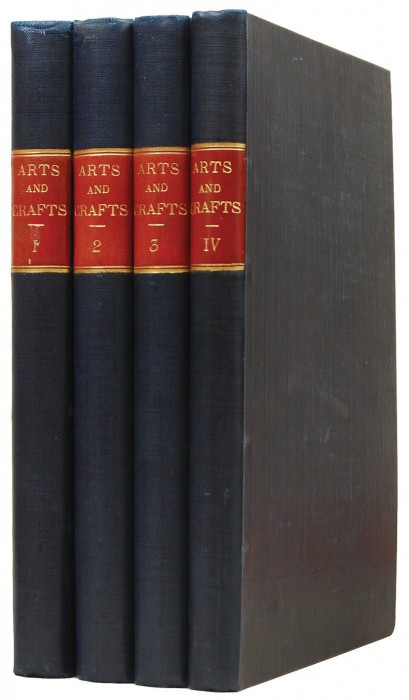One of the most visually delightful items to land on my desk recently, is a set of Arts & Crafts magazine is a wonderful record of the Arts & Crafts and Art Nouveau movements and their appeal to amateur artists and craftspeople.
The Arts & Crafts Movement grew from the ideals of William Morris and John Ruskin, who believed that modern industry was detrimental to English life and aesthetics, dehumanizing the production of goods and influencing the Victorian taste for inexpensive yet gaudy decor. Beginning in the 1860s Morris, Ruskin, and their followers advocated the return to skilled craftsmanship and an over-arching aesthetic influenced by traditional styles such as the Gothic. Morris’s interior design firm became famous for its wallpapers, textiles and stained glass, and his Kelmscott Press revived the art of the hand-press by creating masterpieces of book design such as The Works of Geoffrey Chaucer.
Appearing in the 1890s, and in many ways inspired by Morris, Art Nouveau did not have a social reform aspect like that of the Arts & Crafts Movement, but it did advocate a total aesthetic incorporating art, architecture, and interior design. Its proponents were inspired by graceful and curving natural forms, such as the flowing shapes of plants and the iridescent bodies of insects. The two styles were contemporary for a short period, and the Art Nouveau aesthetic meshed well with the Arts & Crafts emphasis on romanticism and hand-production.
Both movements were also popular with the middle and upper classes, who took to them as hobbyists and semi-professionals (with book binding becoming a particular favourite of artistically-minded women), not unlike the contemporary resurgence of crafting as exemplified by Etsy. It was to capitalize on this trend that Arts & Crafts magazine was founded in 1904. It described itself as “A Monthly Practical Magazine for the Studio, the Workshop, and the Home”, but based on the contents its primary audience was not composed of professionals but middle and upper class people with free time, disposable incomes, and an interest in art but no formal training. It featured practical articles on supplies and tools, instructions for reproducing professional techniques, stylistic advice and patterns, photographs of professional work and museum pieces, announcements of amateur competitions, and general art and exhibition news.
Our set includes all the issues up to April 1906 (the British Library holds issues dated up to August of that year), bound together in four volumes and retaining the original wrappers from some of the issues. It is replete with large photo spreads and detailed instructional diagrams , as well as wonderful patterns designed for readers to use in their own craft projects. Even better from our perspective, one of the magazine’s regular features was a section on bookbinding by master binders Sangorski & Sutcliffe, written during the most creative period in the firm’s history. Below, a selection of images give a flavour of the magazine’s contents. As usual, click any photo to enlarge.
To learn more about these movements see the following links:
- Arts & Crafts and Art Nouveau from the V&A
- The Arts & Crafts Movement in America and Art Nouveau by the Metropolitan Museum of Art
- Arts & Crafts & Art Nouveau from Cornell University
- Sangorski & Sutcliffe Wikipedia Entry
